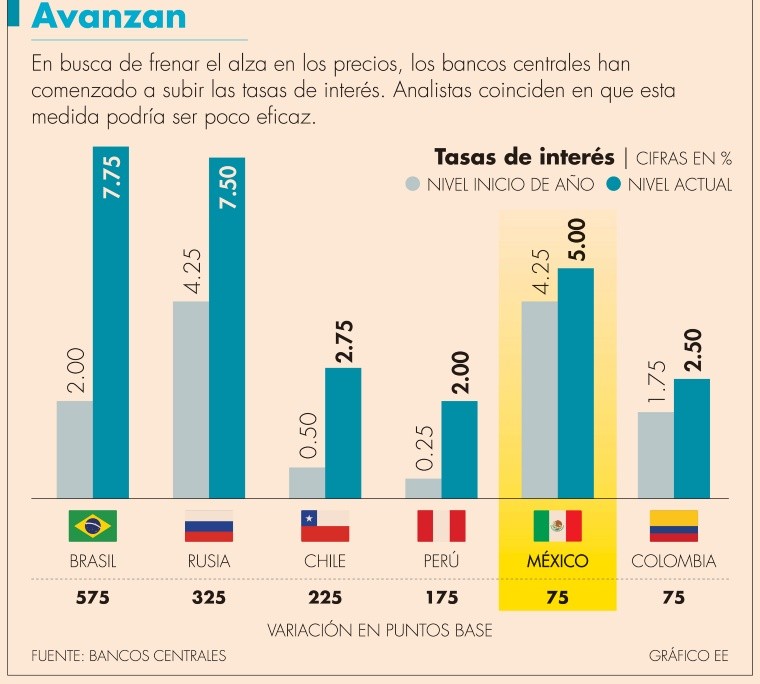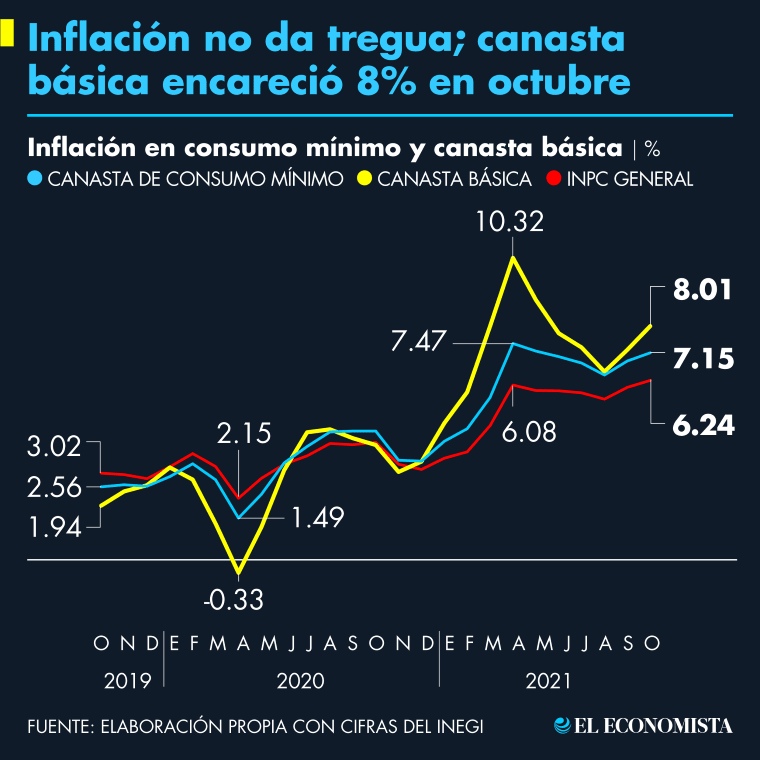Inflation that has soared in the largest economies of Latin America, such as Mexico, Brazil, Argentina, Chile, Colombia and Peru, “has become a heavier burden for low-income households,” warned the International Monetary Fund (IMF).
“Low-income households spend a greater proportion of their income on food, which represents almost a quarter of the average consumption basket. So families that are still recovering from the crisis of the coronavirus, the shortage of food leaves fewer resources to spend on other goods, “said the IMF.
In the update of the institutional blog “Diálogo a fondo,” the economist of the regional studies division in the IMF’s Western Hemisphere Department, Maximiliano Appendino, detail that the average inflation of these five largest economies in the region is 8% per year as of October, where one tenth corresponds to the rise in Brazil.
They explained that the price increase is partially due to the rise in world food prices that started to rise even before the pandemic And that in the case of these five countries, it has increased more than 18% on average since January 2020.
The IMF’s recommendation for central banks is “to find a balance point between the uncertain inflationary prospects, the employment levels still much lower than those observed before the pandemic and the uneven recovery of the labor market.”

It has already become widespread in Mexico
According to the analysis of the Monetary Fund, it is the households with the lowest incomes that feel the burden of inflation the heaviest, since they dedicate a greater proportion of their income to food.
And since it is food that has seen the greatest upward volatility this year, they would be suffering it more significantly.
However, disaggregated information from National Institute of Statistic and Geography (Inegi) allows us to see that in effect, the households that receive in Mexico between one and three minimum wages have felt a more pronounced upward variation in inflation. However, it is already a more generalized pressure in all income strata.
While inflation as of October completed an annual fluctuation of 6.2%, families living with incomes that are between 1 and 3 times the minimum wage, the lowest income, perceived a 6.50% annual increase in inflation.
As the family spending stratum rises, the variation in prices is reduced moderately, so that the one with the least impact is the one that lives with more than 6 minimum wages, which observed in September, a variation of 6.13% in its particular inflation .
In September, the difference was 6% in low-income households versus 4.13 in those with more than 6 minimum wages.

Food for the skies
Inegi offers even more disaggregated information. There we can see that the households that are in the lowest income segment, perceived a variation of 8.41% in the prices of food and non-alcoholic beverages.
While families living with more than 6 minimum wages, they observed a fluctuation of 8.39% in this same purchasing segment.
Taking advantage of this information from Inegi, it can be observed that there are fruits whose price has undergone a variation of up to 25.60% per year, as is the case of apples; chicken meat already has an annual variation of 9.92% at the October cut and tortillas completed an increase of 14.10% also at 12 months.
Reference-www.eleconomista.com.mx